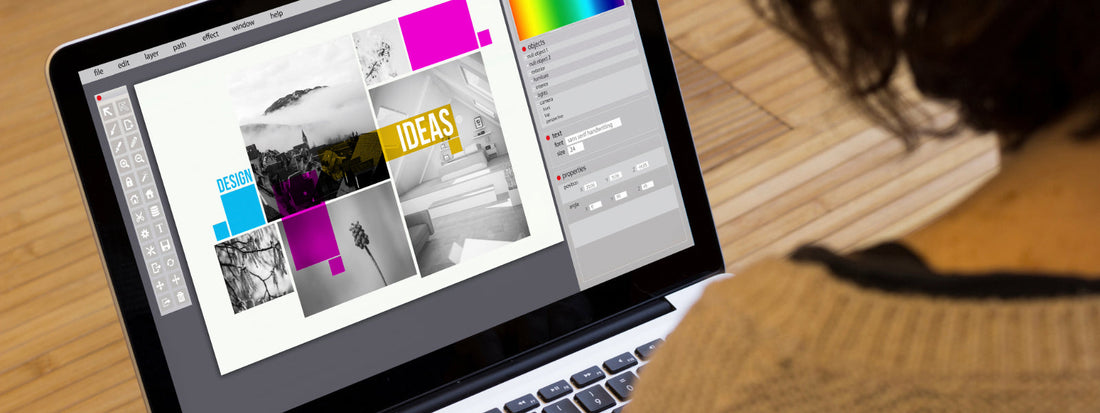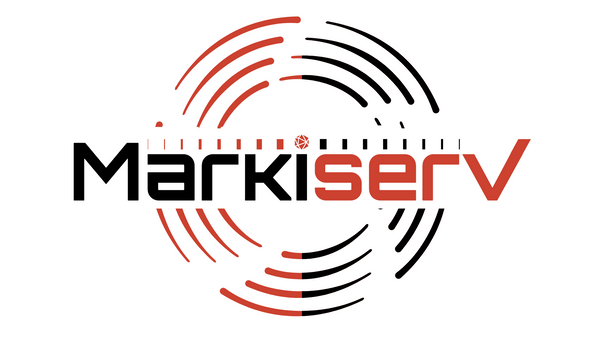
The Best Graphic Design Tools in 2025 and Beyond
Share
Graphic design has always been a field where technology and creativity intersect. With each passing year, advancements in software, artificial intelligence (AI), and digital workflows introduce new opportunities for designers to push the boundaries of their craft. As we move deeper into 2025, the demand for faster, smarter, and more intuitive design tools has never been higher. Whether you are a freelance designer, an in-house creative professional, or part of a large agency, having the right set of tools is essential to staying competitive in this dynamic industry.
The tools used by graphic designers have changed drastically over the past decade. What was once dominated by traditional desktop software has now expanded into cloud-based solutions, AI-assisted platforms, and collaborative design systems that allow teams to work together from anywhere in the world. In 2025, the trend toward automation, generative AI, and immersive design has further transformed the way professionals create visual content.
Another major shift in 2025 is the increasing importance of cross-platform compatibility. Many designers no longer work exclusively on one device or software ecosystem. Instead, they use a mix of desktop applications, browser-based tools, and mobile apps to create designs efficiently. The demand for seamless integration and real-time collaboration has led to the rise of tools that allow multiple users to edit, review, and finalize designs simultaneously.
Moreover, the graphic design industry is now catering to a wider audience than ever before. With platforms like Canva and Adobe Express making it easier for non-designers to create visuals, the market is no longer restricted to professionals with years of experience. However, this shift also means that experienced designers must rely on more advanced tools to distinguish their work from automated or template-based designs. The need for original, high-quality, and innovative designs has never been greater.
In addition to AI-powered automation, another game-changing trend in 2025 is the increasing use of augmented reality (AR) and virtual reality (VR) in design. Many of the latest tools are integrating AR/VR capabilities, allowing designers to create immersive experiences for brands, gaming, digital marketing, and e-commerce. As these technologies continue to evolve, designers who adapt to AR/VR design tools will find themselves at the forefront of the industry.
With all of these changes taking place, keeping up with the latest tools is crucial for any designer looking to stay ahead of the competition. In this blog, we’ll explore the best graphic design tools available in 2025—both the established industry leaders and the emerging platforms that are set to make a significant impact. Whether you’re looking for advanced vector design software, AI-powered creative assistants, or cloud-based collaboration tools, we’ve got you covered. If you are not interested in leveraging tools yourself, and would prefer to use expert services, please feel free to contact us here at Markiserv to learn more.
Established Graphic Design Tools
1. Adobe Creative Cloud Suite
Adobe remains a cornerstone in the graphic design industry, continually updating its suite to meet modern demands.
Adobe Photoshop: Renowned for its comprehensive image editing capabilities, Photoshop has integrated AI-powered features like "Distraction Removal," which automatically eliminates unwanted elements from images, enhancing editing efficiency.
Adobe Illustrator: Specializing in vector graphics, Illustrator offers advanced typography options and color manipulation tools, making it indispensable for creating scalable designs.
Adobe InDesign: Ideal for layout design, InDesign streamlines the creation of brochures, magazines, and digital publications, supporting a wide range of formats.
2. Affinity Designer 2
Serif's Affinity Designer 2 is a vector-based graphic design software compatible with Mac and Windows. It also boasts a powerful array of raster tools, providing designers with versatility in their creative processes.
3. Canva
Targeting non-designers and professionals alike, Canva simplifies the design process with its template-based approach. It integrates Adobe's imaging capabilities and offers both free and premium content, making it accessible for creating marketing materials and social media posts.
4. CorelDRAW Graphics Suite
CorelDRAW continues to be a robust alternative for vector illustration and layout design, offering a user-friendly interface and extensive customization options.
5. Sketch
Primarily used for UI/UX design, Sketch provides a platform tailored for designing user interfaces and prototypes, with a strong focus on collaboration and integration with other tools.
Emerging and Noteworthy Tools
1. Penpot
Penpot is a free, open-source UI/UX design platform gaining traction as an alternative to Figma. With its cross-platform functionality and design system sharing, Penpot is an excellent solution for freelancers and teams looking for a cost-effective way to collaborate on interface design.
2. Runway ML
The rise of AI in graphic design is changing the game, and Runway ML is leading the way. This platform offers AI-powered tools that assist in various creative tasks, from generating images to editing videos, opening new horizons for designers.
3. Adobe's AI Innovations
Adobe has unveiled new AI-powered tools at its Adobe Max conference, showcasing features that aim to augment creativity. Notable innovations include #ProjectRemixALot, which transforms sketches into full designs, and #ProjectInMotion, creating videos from custom shapes based on descriptions.
4. Blender
For 3D modeling and animation, Blender continues to be a powerful, open-source tool that has gained widespread adoption among designers and artists.
5. Figma
Figma remains a leading web-based design tool, especially for UI/UX designers, offering real-time collaboration and a robust set of design features.
Trends Shaping Graphic Design Tools in 2025
1. AI-Powered Design
The integration of AI into design tools is transforming workflows. AI assists in tasks such as inspiration, ideation, and adding finishing touches to designs, enabling designers to create unique and extraordinary works.
2. Augmented and Virtual Reality (AR/VR) Integration
Design tools are increasingly incorporating AR/VR capabilities, allowing designers to create immersive experiences and interactive content.
3. Cloud-Based Collaboration
With the rise of remote work, cloud-based design tools that facilitate real-time collaboration and seamless sharing are becoming essential in the design industry.
4. Sustainable Design Practices
Tools that promote eco-friendly design practices, such as optimizing resource usage and supporting sustainable materials, are gaining prominence.
Wrapping Up
As we look toward the future of graphic design in 2025 and beyond, one thing is clear: innovation will continue to shape the industry in exciting and unpredictable ways. The tools available today are already revolutionizing the way designers work, making it easier to produce high-quality visuals, collaborate across teams, and experiment with emerging technologies like AI and AR/VR. However, staying ahead in the design world requires more than just mastering these tools—it demands a willingness to embrace change, explore new creative possibilities, and adapt to the evolving needs of clients and audiences.
One of the biggest takeaways from 2025’s design landscape is the growing influence of AI-driven design software. While some fear that automation might replace traditional graphic design jobs, the reality is that AI is more of an assistant than a replacement. Tools like Adobe’s AI-powered features, Runway ML, and generative design systems are helping designers work more efficiently by automating tedious tasks, offering creative suggestions, and enhancing workflows. The key to success in this new era is learning how to integrate AI into your design process while maintaining a unique creative touch that sets your work apart.
Another trend that is set to shape the future of graphic design is the increasing emphasis on user experience (UX) and interactivity. Designers are no longer just creating static images—they are crafting immersive experiences that engage users across multiple platforms. Whether it’s designing for mobile apps, web interfaces, or AR/VR environments, the ability to create dynamic and interactive content will be a valuable skill in the years to come. As a result, tools that specialize in UI/UX design, such as Figma, Sketch, and Adobe XD, will continue to play a crucial role in the industry.
Furthermore, the shift toward cloud-based collaboration has made it easier than ever for design teams to work together, regardless of location. Tools like Figma, Canva, and Penpot are setting new standards for real-time collaboration, allowing designers, marketers, and developers to seamlessly share ideas, provide feedback, and iterate on designs without the need for cumbersome file transfers. For businesses, this means faster project turnaround times and more cohesive branding efforts.
Looking ahead, designers who want to future-proof their careers should focus on continuous learning and adaptation. New tools and technologies will emerge, design trends will evolve, and client expectations will change. The best way to stay relevant in this fast-paced industry is to keep experimenting with new software, stay informed about the latest trends, and develop a strong understanding of both traditional design principles and cutting-edge digital techniques.
Ultimately, graphic design in 2025 is about much more than just creating visually appealing content—it’s about storytelling, problem-solving, and innovation. Whether you’re an experienced professional or just starting in the field, leveraging the best tools available will allow you to produce work that stands out in an increasingly competitive market. From AI-enhanced creative tools to interactive AR/VR experiences, the possibilities are endless.
So, if you’re ready to take your design skills to the next level, now is the time to explore the latest software, experiment with emerging trends, and push the boundaries of what’s possible. By staying adaptable and open to new opportunities, you’ll not only enhance your creative capabilities but also position yourself for long-term success in the ever-evolving world of graphic design.
Helpful Links to Learn More:
1. Comprehensive Reviews of Graphic Design Software:
-
PCMag's Best Graphic Design Software for 2025: This article provides in-depth reviews of top graphic design applications, catering to both professionals and enthusiasts.
-
Elegant Themes' 12 Best Graphic Design Software in 2025: A detailed comparison of leading graphic design tools, highlighting their features and suitability for various design needs.
2. Emerging Tools and Trends:
-
Emerging Graphic Design Tools in 2025 You Need to Know: This blog post explores new tools transforming design workflows, including those for branding, UI/UX, AR experiences, and motion graphics.
-
Adobe's Graphic Design Trends for 2025: An overview of the latest design trends, such as AI-powered design and bold minimalism, influencing the industry this year.
3. Essential Tools and Tips:
-
Fiverr's 11 Best Graphic Design Software and Tips in 2025: A guide to top graphic design software options, offering insights into selecting the right tools to enhance your design skills.
-
Approval Studio's Top 20 Tools for Graphic Designers in 2025: A curated list of essential tools, from design system management to all-in-one design suites, to upgrade your toolkit.
